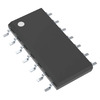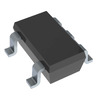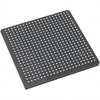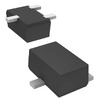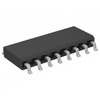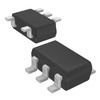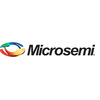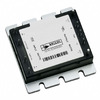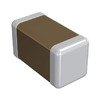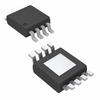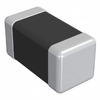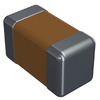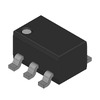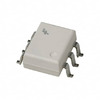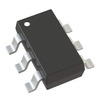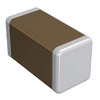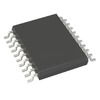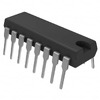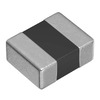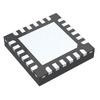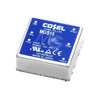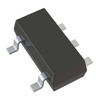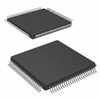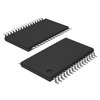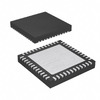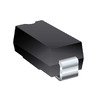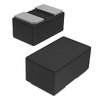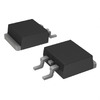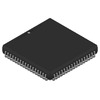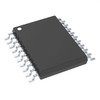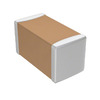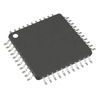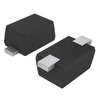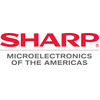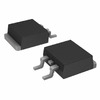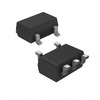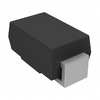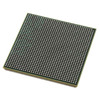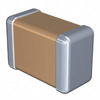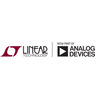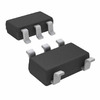Integrating MC1413 in Electronic Projects
The MC1413 is a powerful and versatile transistor array designed for controlling devices like lights, relays, and printer hammers in various applications. This article explores everything you need to know about its features, pin configuration, and practical uses.Catalog
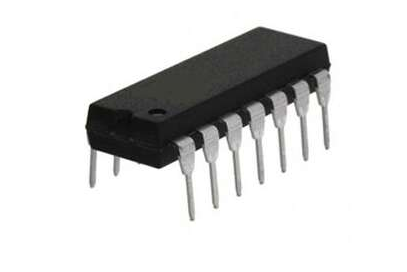
MC1413 Product Overview and Description
The MC1413 is a versatile Darlington transistor array designed to handle various tasks in both industrial and consumer applications. It’s well-suited for operating lights, relays, and printer hammers due to its high breakdown voltage and internal suppression diodes, which help manage inductive loads effectively. With its capability to drive incandescent bulbs with peak inrush currents reaching up to 500 mA, it’s ideal for environments that require robust performance. Additionally, the MC1413 includes a 2.7 kΩ series input resistor, making it a good fit for systems that work with a 5.0 V TTL or CMOS Logic input, ensuring broad compatibility and ease of integration into different setups.
MC1413 Pin Configuration and Details
[IMAGE OF MC1413 Pin Configuration]
[TABLE OF MC1413 Pin Configuration]
MC1413 CAD Model
MC1413 Symbol
[IMAGE OF MC1413 Symbol]
MC1413 Footprint
[IMAGE OF MC1413 Footprint]
MC1413 3D Model
[IMAGE OF MC1413 3D Model]
MC1413 Key Features and Benefits
High Breakdown Voltage
The MC1413 is designed with high breakdown voltage, which allows it to handle higher voltages without risk of damage. This feature gives it an advantage in environments where electrical surges or voltage spikes may occur, ensuring stable performance.
Compatibility with TTL and CMOS Logic
Built with a 2.7 kΩ series input resistor, the MC1413 is compatible with both 5.0 V TTL and CMOS Logic systems. This makes it easier to integrate into different setups, reducing the need for additional components or adjustments in your design.
Peak Inrush Current Capability
With the ability to handle peak inrush currents up to 500 mA, the MC1413 is well-suited for applications involving incandescent bulbs or other devices that require a high initial current. This capability supports reliable operation even in demanding applications.
Automotive-Ready with NCV Prefix
The NCV prefix indicates that the MC1413 can be used in automotive environments, where site and control modifications may be necessary. This feature makes it adaptable for use in various automotive applications, offering flexibility in design.
Pb-Free Packages Available
For applications with specific environmental standards, the MC1413 is available in Pb-free (lead-free) packages. This option supports eco-friendly initiatives and ensures compliance with environmental regulations.
MC1413 Applications and Use Cases
Industrial and Consumer Electronics
The MC1413 is a versatile choice for both industrial and consumer applications. Whether you're managing automated systems in factories or building electronic devices for personal use, this component offers the reliability needed in varied environments.
Lamp Drivers
With its capability to drive incandescent bulbs, the MC1413 is an ideal choice for lamp drivers. Its high inrush current support enables it to handle the initial power surge that bulbs require when switched on.
Relay Drivers
The MC1413 is also well-suited for driving relays, providing the necessary control over circuits that demand quick and reliable switching. This makes it a valuable component in applications where automated control is required.
Printer Hammers
In printing applications, the MC1413 can be used to operate printer hammers, where precise and controlled movement is needed for printing tasks. Its durability and consistent performance make it suitable for repetitive tasks like printing.
MC1413 Schematic Diagram
[IMAGE OF MC1413 Representative Schematic Diagram]
MC1413 Technical Specifications
Technical specifications, features, characteristics, and components with comparable specifications of ON Semiconductor MC1413BPG
[TABLE OF MC1413 Technical Specifications]
Parts with Similar Specifications to MC1413
The parts on the right have specifications similar to the ON Semiconductor MC1413BPG
[TABLE OF Parts with Similar Specs]
MC1413 Packaging Information
[IMAGE OF MC1413 Package]
About the Manufacturer - ON Semiconductor
ON Semiconductor, listed on Nasdaq as ON, leads the way in creating energy-efficient solutions that help lower global energy use. They offer a wide range of products designed to solve challenges across industries, from automotive and communications to consumer electronics, LED lighting, and medical devices. ON Semiconductor’s extensive product line includes power and signal management tools, logic circuits, and custom solutions, all crafted to provide practical answers for specific design needs. The company is known for its reliable supply chain and top-notch quality control, with a network of manufacturing facilities, sales offices, and design centers strategically positioned throughout North America, Europe, and Asia. This global reach allows ON Semiconductor to provide responsive and reliable service to their customers wherever they are.
Frequently Asked Questions [FAQ]
1. What is the MC1413 used for?
The MC1413 is a Darlington transistor array that is ideal for controlling lighting, relays, and printer hammers in both industrial and consumer applications. With high breakdown voltage and built-in suppression diodes, it can handle inductive loads like incandescent bulbs with ease, making it a dependable choice for applications needing consistent performance even under higher voltage conditions.
2. What is a Darlington transistor, and how does it work?
A Darlington transistor, often called a Darlington pair, is a setup where two transistors are connected in a way that amplifies current more effectively. The first transistor amplifies the current, which then flows to the second transistor for further amplification. This design increases the current gain and is helpful for applications requiring higher power with fewer components.
3. How is the Darlington transistor array used?
A Darlington transistor array is commonly used in applications that need high current gain. It is effective in situations where one input signal needs to control a higher power output, such as in motor drivers, lighting systems, and other circuits requiring robust switching capabilities. Its compact design makes it easy to include in many electronic setups.
4. How do you test a Darlington transistor array?
To test a Darlington transistor array, begin by identifying the base, collector, and emitter leads on the transistor. Set your multimeter to the diode setting, connect the positive lead to the base, and then touch the negative probe to both the collector and emitter. This will help confirm that the array is functioning correctly, as a working Darlington pair should show a specific range of readings, depending on its design.
O nas
ALLELCO LIMITED
Preberi več
Hitro povpraševanje
Prosimo, pošljite poizvedbo, takoj bomo odgovorili.
Pogosto zastavljena vprašanja [FAQ]
1. What is the MC1413 used for?
The MC1413 is a Darlington transistor array that is ideal for controlling lighting, relays, and printer hammers in both industrial and consumer applications. With high breakdown voltage and built-in suppression diodes, it can handle inductive loads like incandescent bulbs with ease, making it a dependable choice for applications needing consistent performance even under higher voltage conditions.
2. What is a Darlington transistor, and how does it work?
A Darlington transistor, often called a Darlington pair, is a setup where two transistors are connected in a way that amplifies current more effectively. The first transistor amplifies the current, which then flows to the second transistor for further amplification. This design increases the current gain and is helpful for applications requiring higher power with fewer components.
3. How is the Darlington transistor array used?
A Darlington transistor array is commonly used in applications that need high current gain. It is effective in situations where one input signal needs to control a higher power output, such as in motor drivers, lighting systems, and other circuits requiring robust switching capabilities. Its compact design makes it easy to include in many electronic setups.
4. How do you test a Darlington transistor array?
To test a Darlington transistor array, begin by identifying the base, collector, and emitter leads on the transistor. Set your multimeter to the diode setting, connect the positive lead to the base, and then touch the negative probe to both the collector and emitter. This will help confirm that the array is functioning correctly, as a working Darlington pair should show a specific range of readings, depending on its design.
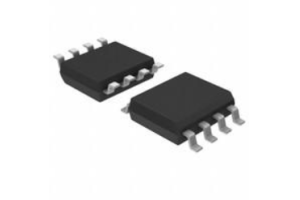
Obsežen vodnik za primerjalnik LM311D
na 2024/11/14
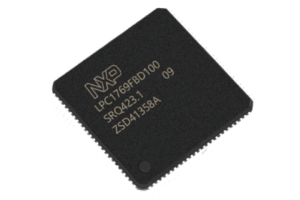
Everything You Need to Know About the LPC1769 Microcontroller
na 2024/11/14
Priljubljene objave
-

Kaj je GND v vezju?
na 1970/01/1 3218
-

RJ-45 Priključni vodnik: RJ-45 Priključne barvne kode, sheme ožičenja, aplikacije R-J45, podatkovni listi RJ-45
na 1970/01/1 2781
-
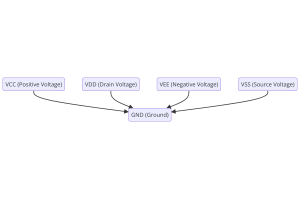
Razumevanje napetosti napajanja v elektroniki VCC, VDD, VEE, VSS in GND
na 0400/11/19 2521
-

VIRDORNE VRSTI VIRKE: SC proti LC in LC VS MTP
na 1970/01/1 2232
-
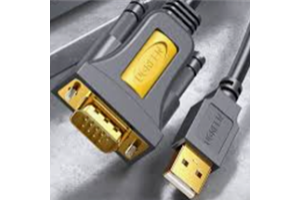
Primerjava med DB9 in RS232
na 1970/01/1 1849
-
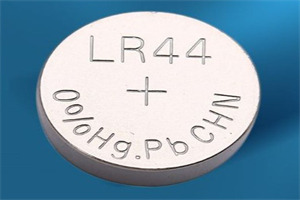
Kaj je baterija LR44?
Električna energija, ki je vseprisotna sila, tiho prežema vsak vidik našega vsakdanjega življenja, od trivialnih pripomočkov do življenjsko nevarne medicinske opreme, ima tiho vlogo.Vendar resnično dojemanje te energije, še posebej, kako jo shraniti in učinkovito oddajati, ni lahka naloga.V tem ozadju se bo ta članek osredotočil na vrsto baterije kovancev, ki se na površini morda zdi n...na 1970/01/1 1822
-

Razumevanje osnov: induktivna odpornost in skrbnost
V zapletenem plesu elektrotehnike trije temeljnih elementov zavzemajo osrednjo fazo: induktivnost, odpornost in kapacitivnost.Vsak ima edinstvene lastnosti, ki narekujejo dinamične ritme elektronskih vezij.Tu se odpravimo na pot, da bi razvozlali zapletenosti teh komponent, da bi odkrili svoje različne vloge in praktične uporabe znotraj ogromnega električnega orkestra.Induktivnost s čarovniš...na 1970/01/1 1778
-

CR2430 Obsežen vodnik za akumulator: Specifikacije, aplikacije in primerjava z baterijami CR2032
Kaj je baterija CR2430?Prednosti baterij CR2430NormaCR2430 baterijske aplikacijeCR2430 ekvivalentCR2430 proti CR2032Velikost baterije CR2430Kaj iskati pri nakupu CR2430 in enakovrednihPodatkovni list pdfPogosto zastavljena vprašanja Baterije so srce majhnih elektronskih naprav.Med številnimi razpoložljivimi vrstami imajo kovanske celice ključno vlogo, ki jo običajno najdemo v kalkulatorjih, d...na 1970/01/1 1762
-

Kaj je RF in zakaj ga uporabljamo?
Tehnologija radiofrekvence (RF) je ključni del sodobne brezžične komunikacije, ki omogoča prenos podatkov na dolge razdalje brez fizičnih povezav.Ta članek se poglobi v osnove RF in pojasnjuje, kako elektromagnetno sevanje (EMR) omogoča komunikacijo RF.Raziskali bomo načela EMR, ustvarjanje in nadzor RF signalov in njihove široke uporabe.Članek zajema tudi zgodovinske mejnike tehnologije...na 1970/01/1 1744
-

Obsežen vodnik za HFE v tranzistorjih
Transistorji so ključne komponente v sodobnih elektronskih napravah, kar omogoča ojačanje in nadzor signala.Ta članek se poglobi v znanje o HFE, vključno s tem, kako izbrati vrednost HFE tranzistorja, kako najti HFE in dobiček različnih vrst tranzistorjev.Z raziskovanjem HFE pridobimo globlje razumevanje, kako delujejo tranzistorji in njihovo vlogo v elektronskih vezjih. Katalog Kaj je HFE ...na 5600/11/19 1736
